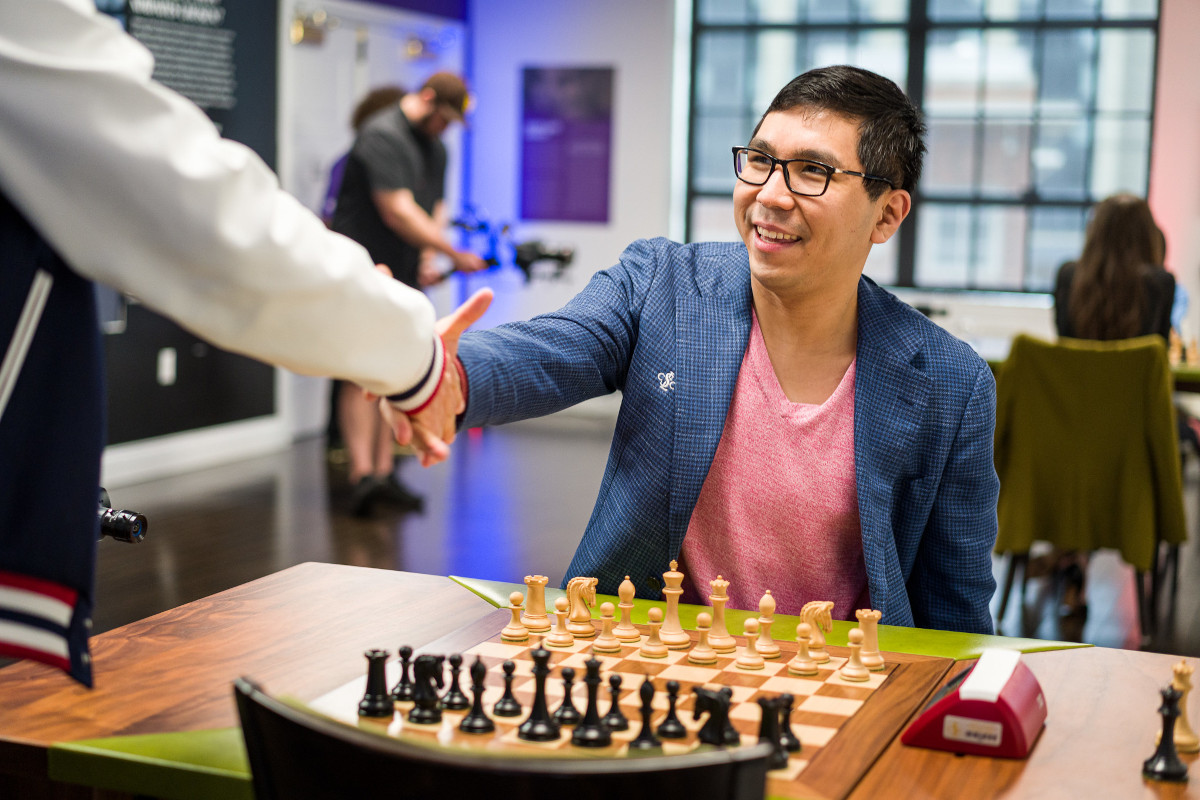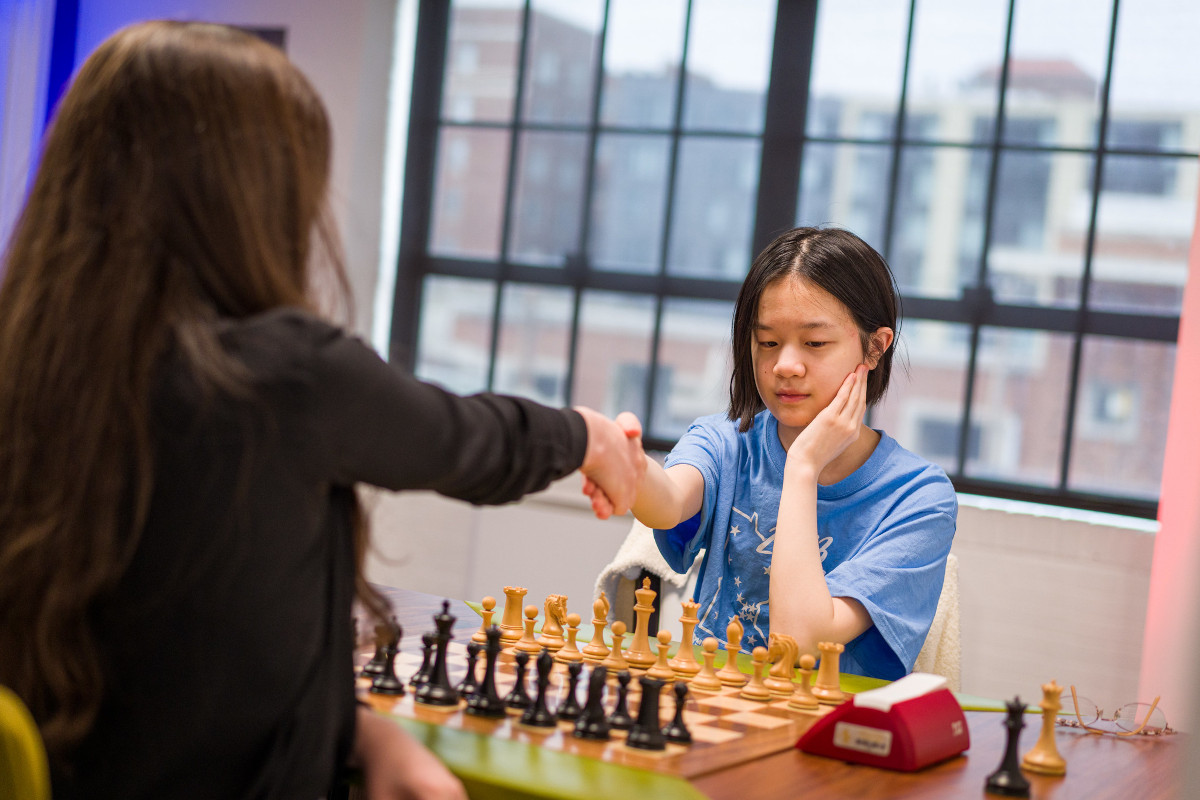Rematches
The regulations of the American Cup differentiate between the formats used in the champions brackets and the elimination brackets. In the latter, matches are decided on a single day, with rapid games being played from the get go (first 25-minute games, then 10-minute games, and so on). In the champions bracket, on the other hand, two classical games — played on two separate days — set things going.
 Let us learn together how to find the best spot for the queen in the early middle�game, how to navigate this piece around the board, how to time the queen attack, how to decide whether to exchange it or not, and much more!
Let us learn together how to find the best spot for the queen in the early middle�game, how to navigate this piece around the board, how to time the queen attack, how to decide whether to exchange it or not, and much more!Thursday was a rest day for the winners of the champions brackets, while the two players who survived up to this point in each section’s elimination brackets decided who would move on to the grand finals. Once all was said and done, Wesley So gained the right to face Hikaru Nakamura in the open, while 13-year-old Alice Lee advanced and set up a rematch against Irina Krush in the women’s.
Both So and Lee already lost to Nakamura and Krush, and will need to beat them twice to get the titles in each section. The winners of the champions brackets have yet to lose a match, so they will get a second chance (a third match against the same opponent, in this case) if they lose in the grand final. Classical games will be played on Friday and Saturday. If So or Lee win, the potential deciding matches are scheduled to take place on Sunday.

A smiling Wesley So | Photo: Saint Louis Chess Club / Lennart Ootes
So 2½ - 1½ Aronian
The first two games of the match, lasting 76 and 47 moves respectively, finished drawn, with So failing to convert his advantage in a rook endgame in the first encounter — the engines show that the ending was winning for So at various points.
Aronian got white first in the blitz tiebreakers (10 minutes plus 5-second increments). The Berlin Defence that appeared on the board was anything but dull.
This is what happens when White goes all-in in this opening. Aronian gave up two pawns on the queenside to hinder Black’s development and force his opponent to leave the king in the centre. Engines here give 19.Rde1 as the best alternative for White but, naturally, 19.f5 was the human way to go after having burned so many bridges.
So continued grabbing the gifted material as the game continued with 19...Ne3 20.fxe6 Nxd1 21.Rf7 — again going all-in!
Black has his pieces stuck on their initial squares, but he is still a whole rook up. Aronian tried to sacrifice both his minor pieces (only the knight was taken), as he tried to break through against So’s stoic defence.
In the end, it turned out that Black had enough recourses to defend the position. Aronian resigned the game in the following peculiar position.
Game over. So drew the next game with black and thus advanced to the gran final.
Select an entry from the list to switch between games
 Wesley So published two new opening DVDs: 1.b3, the so called Nimzo-Larsen-Attack, for White and his black secrets in the modern Italian. Get them in a package and save money!
Wesley So published two new opening DVDs: 1.b3, the so called Nimzo-Larsen-Attack, for White and his black secrets in the modern Italian. Get them in a package and save money!
Lee 3 - 1 Paikidze
Exciting chess was the rule in the match between Lee and Paikidze. All four games finished decisively, with tactical fights making for an entertaining exhibition for the spectators. The contenders traded wins with white in the first set of 25-minute games. Lee scored first, after Paikidze overlooked a pretty-yet-simple tactic in a wild position.
17...g5 allowed 18.Qxc5+, using the pin along the dark-squared diagonal. Black is doomed. Resignation came shortly after.
Lee also won both 10-minute games. The first one saw the players entering a materially imbalanced position. The 13-year-old had a queen for Paikidze’s rook and bishop (and a potentially dangerous passer on the a-file). A decisive moment came when Paikidze underestimated her opponent’s attacking chances on the light-squared long diagonal.
White here needed to address the fact that the queen is ready to go to g5, creating mating threats together with the bishop on b7 — 35.Bb5, preparing to defend from f1 was called for. Instead, 35.Red1 Qg5 36.g3 Qh5 followed, and White was in deep trouble.
The light-squared complex around White’s king is simply too weak. Paikidze resigned the game five moves later.

Nazi Paikidze | Photo: Saint Louis Chess Club / Lennart Ootes

Links



























